That Pedal Show rate the most legendary pedals of all time: the deserving, the overrated and the total sleepers
Do these stompboxes deserve their notoriety or did they just get lucky? And how do you get the best from them? Dan Steinhardt and Mick Taylor share their thoughts – and tell us which pedals have gone under the radar over the years
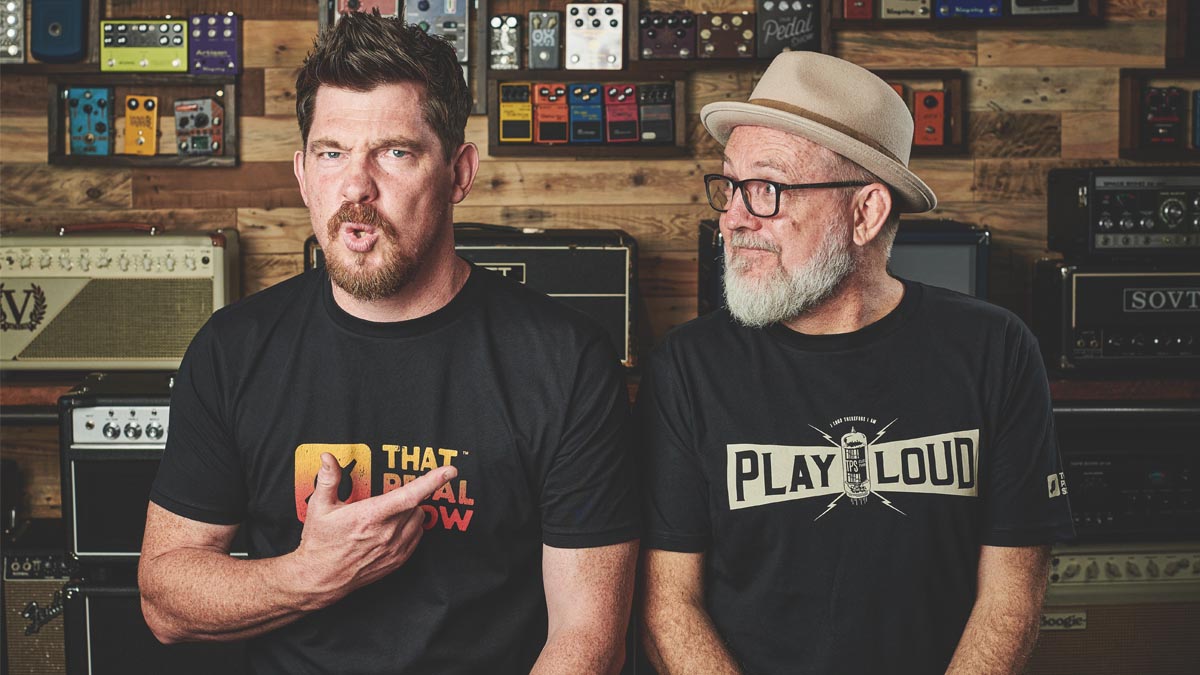
lt’s always a happy day when we get to venture into Dan and Mick’s abode – the gear-packed studio where they film their incredibly popular videos on tone, guitars, amps and effects for That Pedal Show.
As well as being essential YouTube viewing for guitarists, the duo keep themselves extremely busy with Experience Days, in which fans come to learn more about effects direct from Dan and Mick, plus gigging with stellar artists such as Andy Timmons and hunting down exciting new effects in every corner of the globe.
Who better, then, to get round the table to talk about some of the most iconic pedals of all time…
This year is the 60th anniversary of the first fuzz pedal, the Maestro FZ-1. What’s the greatest fuzz pedal that followed this, in your opinion?
Mick Taylor: “For me, it’s the Fuzz Face because, as you know, they’re all descended from the same thing. When the FZ-1 hit, the whole world cottoned on to it and that begat the Tone Bender, which then became the Fuzz Face, and then in and out we go.
“And yet things were no different then than they are now: something cool comes out and every company jumps on the bandwagon. So whether it was Dallas Arbiter in London, or Vox or Marshall, or John Hornby Skewes in the North, they all want to make their version of this thing.
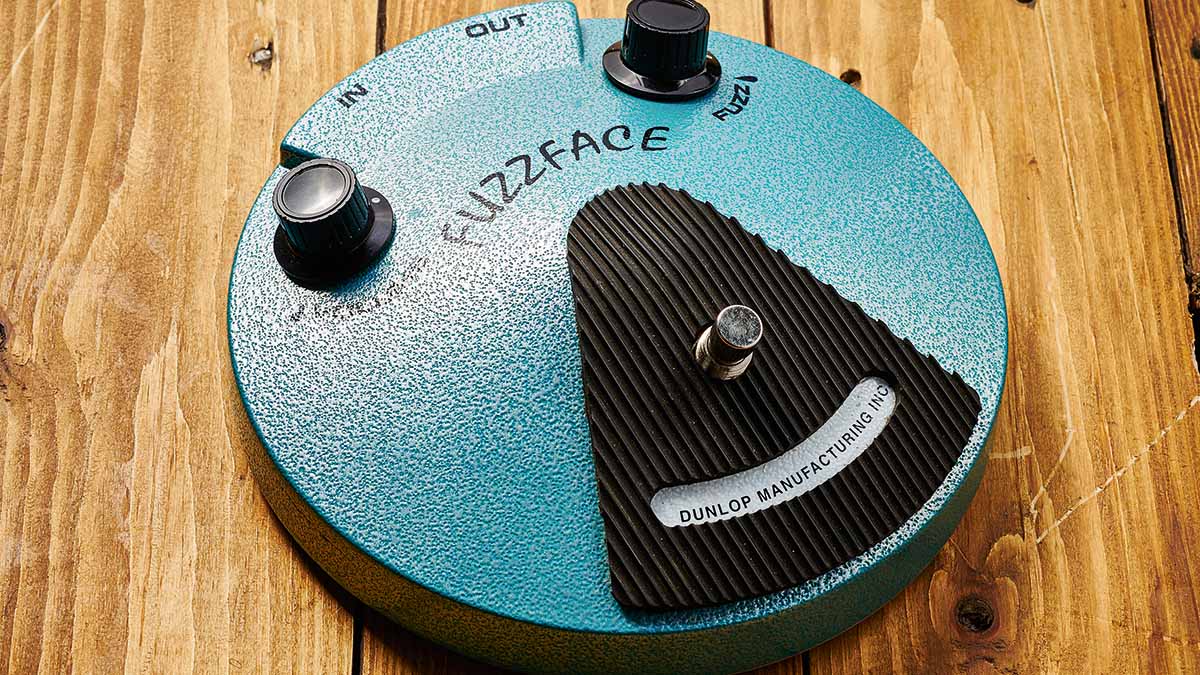
“So, for me, of course it’s the Fuzz Face because of Jimi, but actually it’s probably the [John Hornby Skewes] Zonk Machine. Because it adds this slightly weird octave thing and having known John Hornby Skews and loads of people that have worked there over the years… to think this iconic fuzz came out of this place in the north of England, just because they needed to jump on a bandwagon.
Get The Pick Newsletter
All the latest guitar news, interviews, lessons, reviews, deals and more, direct to your inbox!
“And yet it created all this history afterwards – it’s just a magic, magic story. But I’m a massive Doyle Bramhall fan [a present-day Zonk Machine user] and I love people who’ve used it. So it’s actually the Zonk Machine for me.”
Dan Steinhardt: “The tricky thing is, I love all of the paths [that fuzz evolved along]. If you think of the iconic sounds that have been created by all the variants – by the Big Muff variants, the Tone Benders – they’ve all had a special place. That said, I always come back to my Analog Man Sun Face, which is simply a Fuzz Face with an external bias control. That’s the one in my rig that just works. I’ve tried to get away from it, but I always come back to it.
“There’s something really magical about the simplicity of that circuit, and that you can tweak that circuit ever so slightly one way or another [with the bias control] and you have a different animal. So, yeah, just that circuit itself is so magic and so pliable, the way it works with the sensitivity of the instrument.”
Why should we care about fuzz? It’s not amp-like or like the natural voice of the guitar.
Dan: “Fuzz is a journey. And, for me, it’s like the blues. When you start playing guitar, you learn your first little bit of blues, right? And then, a year further down your journey, you’ll play the blues a bit differently, and then five years down the journey as your sensitivity as a musician grows, you’ll play the blues very differently.
“Fuzz is the same thing. Because if you’re just starting out on your journey, it doesn’t make a lot of sense – it doesn’t sound like a guitar, it’s just a mess. But a really sensitive fuzz is such a dynamic effect and it doesn’t make any sense until you develop sensitivity in your guitar playing.
“That’s when it comes into its own: when you have your own inflections, your own vibrato and your own dynamics, the fuzz will take all that and just make it an instrument unto itself.”
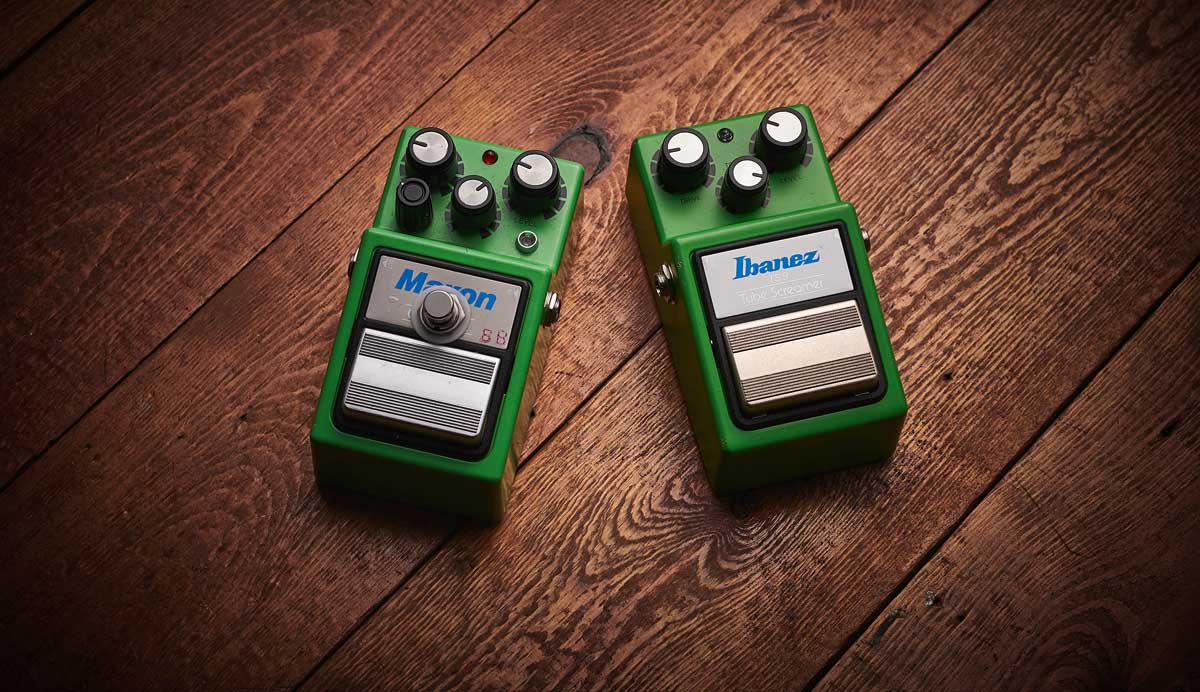
Is the Tube Screamer the greatest overdrive pedal of all time? Discuss…
Mick: “I think yes, with a caveat. And the caveat is, it arrived at a particular point in history where it was required. So the most popular amps of the day, particularly in the US, were high‑powered Fender types of amp. By the time the Tube Screamer comes along in ’78, Fender had gone from those tweed amps in the late ’50s through the black-panel amps of the mid-’60s into the silver-panel amps of the late ’60s.
“And what happened all along that curve is they got louder, they got cleaner, they got more anodyne-sounding and the mids got more and more scooped out because of the design of the amp.
The Tube Screamer enabled guitar players to revisit some of the things that were really great about some of those earlier cranked amps
Mick Taylor
“That was all happening in parallel with people discovering that a cranked Marshall is really brilliant, which, of course, happens as early as the mid-’60s. Clapton kicks it off with his Bluesbreaker, then we go into Hendrix and all of the great classic rock of the ’70s. And that’s a really thick, meaty, brilliant rock sound.
“But everyone who wasn’t using cranked Marshalls ended up with something like a silver-panel Fender. Well, guess what happens when you put a Tube Screamer into that? It puts back all of that midrange and lovely stuff that the cranked Marshall has got.
“And I just think that it enabled guitar players to revisit some of the things that were really great about some of those earlier cranked amps. Of course, it also gave the Strat the lift it needed and gave birth to that whole generation of mid-boosty, vocal lead tones. In fairness, though, you’d have to say the Boss OD-1 was also in that mix as well.”
Dan: “Also, think of the metal guys that have used absolutely cranked Marshalls in the studio. What they needed was a little bit of bass cut and a little bit of that mid-push, and they got that with a Tube Screamer. So it’s been the basis of so many of those heavy tones, too.”
Do you think there’s a meaningful sonic difference between the different TS models?
Mick: “I’ve got TS9s and 808s that sound almost identical. And I’ve got 808s that sound very different to each other… so is it the op-amp that makes all the difference or the other component tolerances? So you’re fretting about whether it’s the JRC4558D chip or something else and that’s making one Tube Screamer however many per cent different [from another].
“But then if you plug your Tube Screamer into a Twin followed by a Marshall you’ll hear, like, a 99 per cent difference [laughs]. So where is the difference? Having said that, I have one Tube Screamer that is by far my favourite. But I don’t really understand, necessarily, why that is.”
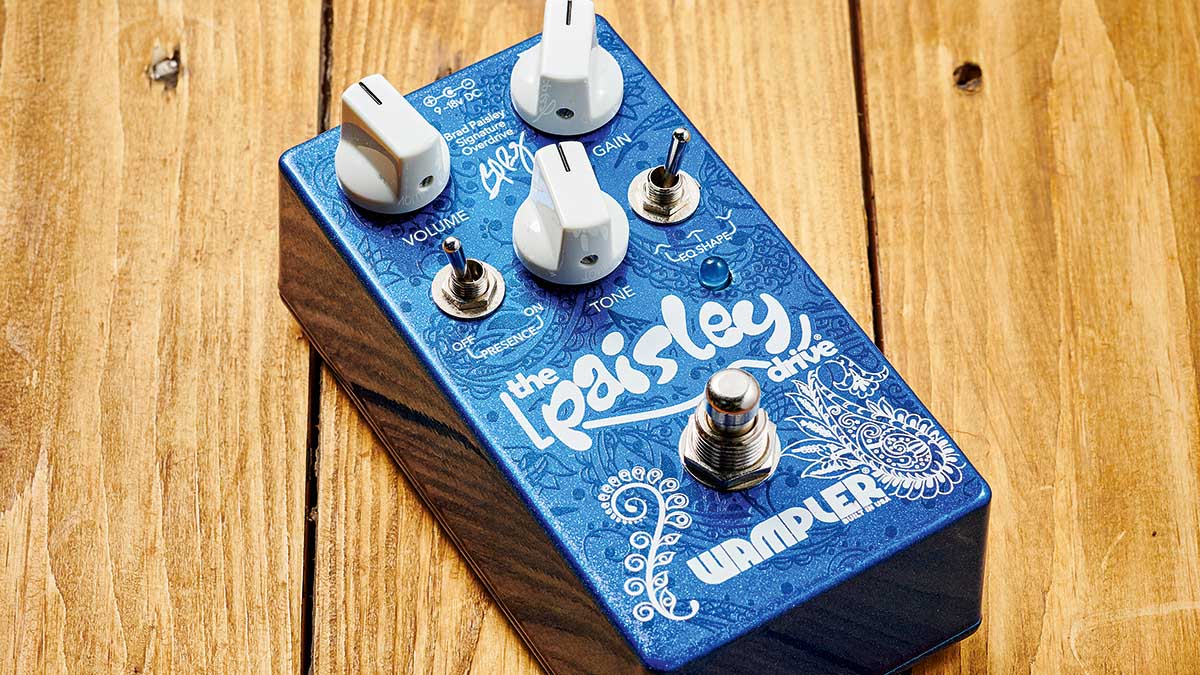
What are your favourite TS-inspired pedals and Tube Screamer clones by other makers?
Mick: “Hudson Sidecar. Without any shadow of a doubt for me. He [Michael Hudson] just did a great job of putting some stuff on there that addresses some of the issues you might have with your Tube Screamer on certain days, like bottom-end response, a bit more attack.
Dan lent our Hudson Sidecar to Ed O’Brien and I miss it greatly
Mick Taylor
“Which you could well argue makes it no Tube Screamer any more, but I fundamentally cannot see the point of me-too designs in any part of life. So I would say Hudson Sidecar. Dan lent ours to Ed O’Brien and I miss it greatly [laughs]. But I also love the Wampler Paisley Drive. Working with Brad Paisley, Brian [Wampler] put in a bunch of stuff – so it will do a spot-on TS and it will then do everything you wished your TS would do to either side. It is a fabulous pedal.”
Dan: “We had Kirk Fletcher in years ago, at the old studio, and he kicked on a pedal and it just sounded amazing. And he said, ‘That’s the Jam Pedals Lucydreamer.’ I really like it because it’s got less compression and less humped midrange – so in my setup it’s the one that I liked the most. For some of us, it is the one Tube Screamer variant that does work. And whenever I’ve heard that pedal, it’s always been really standout.”
What do you think are the most underrated overdrives out there?
Dan: “The one that I’d choose is the Keeley Filaments. Years ago in Germany, we did a video with Robert Keeley and I hadn’t seen this thing before I kicked it on – and I thought it sounded absolutely amazing.
“Whenever we’ve used one on the show, you can dial it in to sound flippin’ fantastic. And yet I never see them out there. It’s a really great alternative to a [Boss] Metal Zone – it’ll give you all that thud and thump and the aggression that you want but without being fizzy. Really amazing.”
Apart from the diodes in the Klon, everything else is off the shelf: simple [componentry]. The genius is in the design and the amount of headroom in it… it’s such a clever design
Dan Steinhardt
Mick: “It’s the Thorpy Warthog for me. First off, everything Thorpy makes is stellar – the way they manufacture, that commitment to really high-quality through whole design. You know, we talked a lot about fuzz earlier. Well, there are a lot of people who really love distortion but struggle with fuzz, and the Warthog straddles those two things beautifully. It can do the late-’60s, slightly heavy distortion, on-the-edge-of-fuzz sounds and you can dial it back from there.
“If I’m ever looking for a sound that’s got a bit more aggression but still plenty of gain and I don’t want to go full-on fuzz – because sometimes it can be hard to deal with – then it’s The Warthog every time. Just a great, really interesting point between distortion and fuzz. It seems to work with pretty much any amp, too.”
When it comes to legendary pedals – and infamously valuable ones – you can’t avoid the Klon Centaur. Why is it such a big deal?
Dan: “The first part of why you should care about it is because, apart from the diodes in it, everything else is off the shelf: simple [componentry]. The genius is in the design and the amount of headroom in it… it’s such a clever design. It goes to show that if you’ve got a really great design, you don’t have to have ‘hen’s teeth’ components.
“But, again, I had a Klon back in the day and I never got on with it. Same thing with a Tube Screamer. I actually had two Klons: bought one, friend lent one to me and said, ‘Let me know if you wanna buy this…’ and I tried it and thought I must have missed a trick. But then later I bought another one and it just didn’t connect with me. However, when I hear Mick with his Klon and a Fuzz Face into a Two-Rock, it’s hands down, easily in the top five guitar sounds I’ve ever heard in my life. It’s absolutely astonishing.”
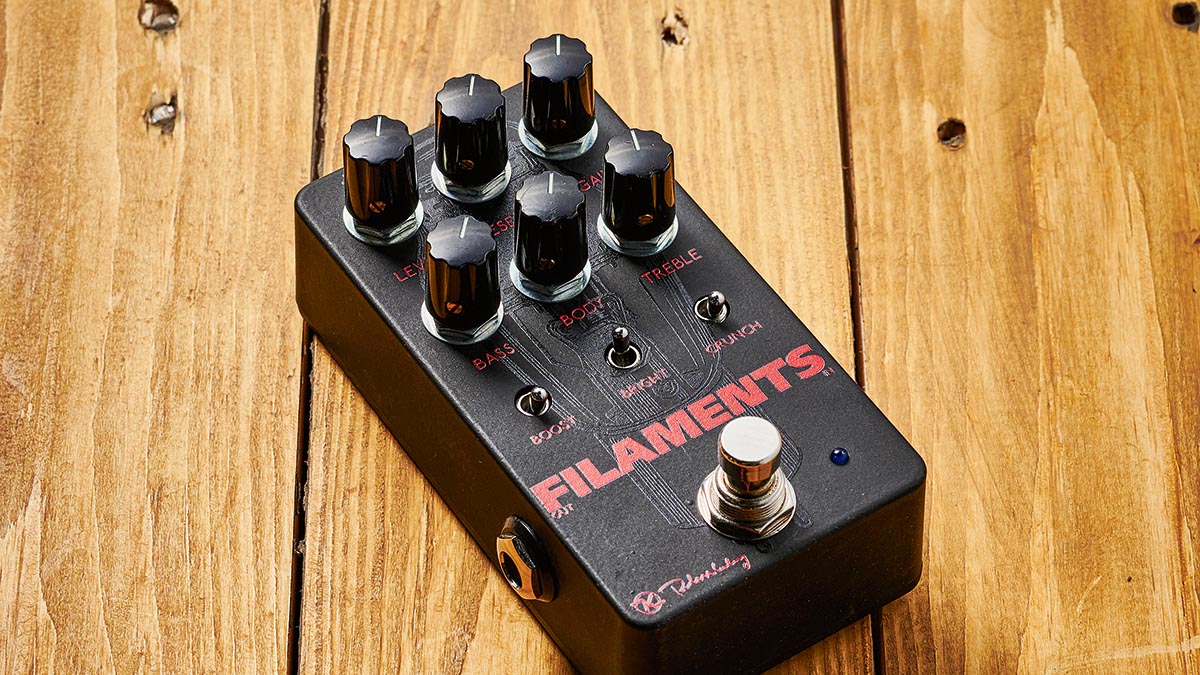
Mick: “Actually, I think no-one should care about the Klon and the prices should fall dramatically and everyone should put them on eBay [laughs]. I mean, is a ’59 ’Burst a fantastic guitar? Yes, of course it is. Is it worth a million dollars? Yeah, it’s worth that as an investment. But is it worth it as a musical instrument? Dunno. Same as a Klon.
“You know, the prices that people are paying for them are ridiculous. But if the cash stays in it as an investment, that sort of cancels the monetary argument out. Is it worth it as an investment? Yes. Musically? Dunno.
“Sonically, it’s important in a number of ways. One, it was a watershed time for effects pedals in that here comes somebody who built something in the true boutique style. It had a custom case, it had this incredible approach to hand-wiring and construction that hadn’t been seen in pedals for some time. And it, along with a handful of other pedals, heralds the beginning of the boutique pedal world…
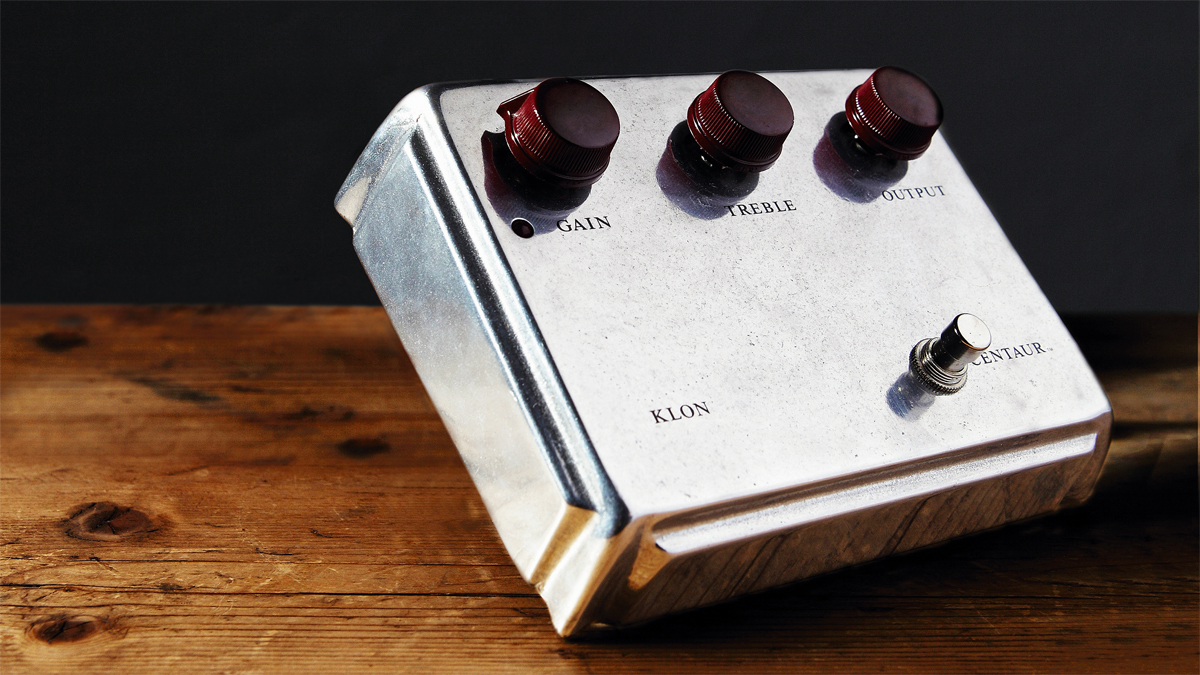
“So it’s an important turning point, historically, which is why you should care about it. Whether you like the sound of it or not, alongside everything else, is entirely subjective. I happen to love the sound it helps make in my rig, and in David Grissom’s rig – not that there’s any comparison there!
“It’s the classic ‘more’ pedal. It focuses [your tone] up, sharpens it, carves off a bit of bass, and gives you a bit of bite somewhere between 3k and 4k. But it also does that really important 1k mid-kick, which is the bit where you get feedback. And guess what? It sounds brilliant with Strats, too. So I think it’s as important historically as it is sonically; the value is… like anything else that has stupid value.”
When you look at an original Klon, it is beautiful – it absolutely is art
Dan Steinhardt
Dan: “But also when you look at an original Klon, it is beautiful – it absolutely is art. And the reason, as far as I’m aware, that Bill [Finnegan] stopped making it wasn’t because he couldn’t get components. It wasn’t because he couldn’t get boards or whatever; it was because they couldn’t make the cases the way he wanted to make them, and that was so important to him. Because you look at that thing, it is so stunning the way that thing is made, and that was as important to him as any other aspect of it.”
Jamie Dickson is Editor-in-Chief of Guitarist magazine, Britain's best-selling and longest-running monthly for guitar players. He started his career at the Daily Telegraph in London, where his first assignment was interviewing blue-eyed soul legend Robert Palmer, going on to become a full-time author on music, writing for benchmark references such as 1001 Albums You Must Hear Before You Die and Dorling Kindersley's How To Play Guitar Step By Step. He joined Guitarist in 2011 and since then it has been his privilege to interview everyone from B.B. King to St. Vincent for Guitarist's readers, while sharing insights into scores of historic guitars, from Rory Gallagher's '61 Strat to the first Martin D-28 ever made.
“The original Jordan Boss Tone was probably used by four out of five garage bands in the late ’60s”: Unpacking the gnarly magic of the Jordan Boss Tone – an actual guitar plug-in that delivers Dan Auerbach-approved fuzz
“This is a powerhouse of a stompbox that manages to keep things simple while offering endless inspiration”: Strymon EC-1 Single Head dTape Echo pedal review












